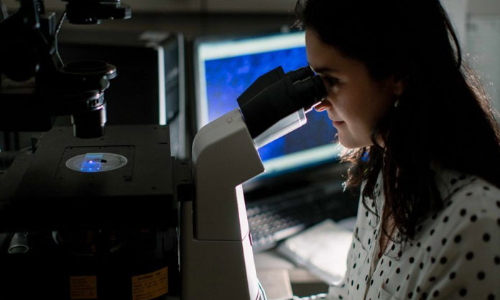Live
- Former Principal of SPW College passes away in US
- Hyderabad: Govt out to remove electric poles, transformers on roads across city
- KCR goes into huddle with State legal eagles
- Formula E race: KTR to be arrested soon?
- Film fraternity stands with Allu Arjun
- New CUAP campus faces security challenges
- HC grants protection to Allu Arjun from arrest
- Stampede victim’s husband ready to withdraw case against Allu Arjun
- Tomatoes price falls drastically to Rs 1 per kg at Pathikonda agri market
- Police clarify on Sandhya Theatre mgmt’s letter, deny allegations of misbehaving with Allu Arjun
Just In

Scientists have developed a new robotic sensor technology that can be used to measure hormones which affect fertility, sexual development and menstruation more quickly and cheaply than current methodsThe technology, described in the journal Nature Communications, was tested in patients at Hammersmith Hospital in the UK
Scientists have developed a new robotic sensor technology that can be used to measure hormones which affect fertility, sexual development and menstruation more quickly and cheaply than current methods.The technology, described in the journal Nature Communications, was tested in patients at Hammersmith Hospital in the UK.
Doctors usually diagnose severe reproductive health problems such as infertility and early menopause by carrying out a blood test to measure the amount of luteinising hormone (LH) in the sample, said researchers at Imperial College London in the UK and The University of Hong Kong.
Current blood tests cannot easily measure the rise and fall of LH levels which is vital for normal fertility - so-called LH pulse patterns that are linked to reproductive disorders.
It is not currently feasible to measure LH pulse patterns in a clinical setting as doctors need to take a blood sample from patients every 10 minutes for at least eight hours. In addition, the analysis of these samples is time consuming as the blood needs to be sent to a laboratory and testing is expensive. The researchers behind the trial have used a novel biosensor linked to a robotic system, which they call Robotic APTamer-enabled Electrochemical Reader (RAPTER).
It has the potential to transform the clinical care of patients with reproductive disorders by monitoring the hormone patterns of patients in real-time. In the study, the prototype RAPTER device was used to measure LH in the blood of patients taken every ten minutes to yield an immediate result. The team believes that it could pave the way for more personalised medicine.
The researchers hope that the technology can be developed to give clinicians a clearer picture of LH pulsatility and suggest more effective treatments based on an individual's needs.
"Reproductive health issues are common amongst women in the UK and around the world. Diagnosis of some of these conditions can be lengthy resulting in delays to treatment," said Professor WaljitDhillo, Professor at Imperial College London.
"Reproductive health issues can also impact women's mental and physical wellbeing. There is a clear need for new and better ways to diagnose these conditions more quickly. "Our technology will be able to give clinicians a faster and more accurate diagnosis of hormone pulsatility that affects reproductive health, which could lead to better and more targeted treatments for women," Dhillo said.
In the study, which took place between 2015 and 2019, researchers used the RAPTER to measure LH pulse patterns from 441 blood samples of women who either had normal reproductive function, were menopausal, or had hypothalamic amenorrhea, a condition where a woman's period stops. The large-scale device then gave an immediate reading. Working with researchers from the Universities of Bristol and Exeter, the team then used a mathematical method called the Bayesian Spectrum Analysis (BSA) to give an overall score of LH pulse levels.
The results were compared with current tests to measure LH levels. The RAPTER platform was able to detect changes in LH pulse patterns in patients with reproductive disorders. It was also able to distinguish between different patient cohorts for the first time using this new technology. For example, women with menopause have high LH levels compared to healthy fertile women with normal LH levels, or women with hypothalamic amenorrhoea who have low LH levels.
Unlike current methods, the test is low-cost and can provide results instantly.The team will now work on refining the technology to create a smaller sensor similar to a glucose monitoring device that can be used to continuously track changes to LH levels of patients in the clinic or remotely and could be available in the next three to five years.
"We have developed technology that is able to measure LH pulsatility in patients more quickly and cheaply than current methods," said Professor Tony Cass from the Imperial College London. "We will now work towards making the technology more accessible for the clinic by reducing the size of the device, which could revolutionise the clinical care of patients with reproductive or other disorders," Cass said.

© 2024 Hyderabad Media House Limited/The Hans India. All rights reserved. Powered by hocalwire.com







